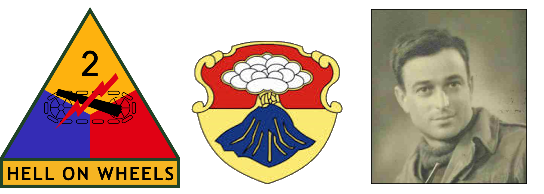In early 1945, American war planners were seriously considering the possibility of taking an intact bridge across the Rhine River. The likelihood of success was discounted by the planners but considered it a worthy goal. General Eisenhower also was interested in the Ninth Army's plans to capture a bridge (MacDonald, 1993). On March 1 the 2nd Armored Division and the 83rd Division were given the mission of capturing Neuss and securing 3 bridges (a railroad bridge 2 highway bridges) and a bridge near Oberkassel. Neuss was cleared but found 3 bridges destroyed. At Oberkassel, a task force, (elements from 736th Tank Battalion, 643rd Tank Destroyer Battalion and 330th Infantry) were discovered approaching the Oberkassel bridge. Although the task force hurried toward the bridge, the Germans were able to destroy the bridge (MacDonald, 1993). Interestingly this task force was disguised as Germans (Düsseldorf-Oberkassel, n.d.) North of Nuess at Krefeld-Uerdingen was the 1640-foot intact Adolph Bridge. The Adolph Hitler bridge was within the XIII Corps zone with the 5th Armored Division probable candidate to take the bridge.
However, the gains made by the 2nd Armored Division of the XIX Corps made it a possibility to take the bridge. However, the 2nd Armored Division position was about 13 miles from the bridge with the Nord Canal an obstacle to be crossed. The Nord Canal was narrow and deep serving as an effective antitank barrier (Smith, 2003). The XIII Corps contingency plans were to shift northward should the 2nd Armored take the Nord Canal. On March 1, a task force from the 2nd Armored Division Combat Command A crossed the canal and by nightfall were only three miles from the Adolph Hitler Bridge. This success facilitated the movement of the XIII Corps to move north, enabling the XIX Corps to continue along the west bank of the Rine (MacDonald, 1993). Although arrangements were fixed the XIII Corp would make accommodations to allow the XIX Corps to pursue the Adolf Hitler Bridge objective, the XIII Corps commander protested. He cited terrain issues including canals, road, and railway embankments (not ideal for armor), and that two of his divisions should continue their movement toward the Rhine. With this situation, Generals Meade (XIII) and Simpson (XIX) inspected the forward areas and learned that heavy fighting was delaying the movement of the 102nd Infantry Division. It was agreed that in order to break the stalemate, it was necessary to take advantage of the 2nd Armored Division's momentum. In the end, the mission to capture Uerdingen (and the Adolf Hitler Bridge) was passed to the XIX Corps. Specifically, this mission involved Combat Command B of the 2nd Armored Division (MacDonald, 1993). Note: The 67th Armored Regiment, 3rd Battalion was a unit in the Division Reserve (Combat Command Reserve (CCR)). Kenneth was assigned to Company H, 3rd Battalion. Note: Different from a military reserve force (Military Reserve, n.d. and Combat Command, n.d.), a division reserve consists of a group of personnel or units that are not initially committed to a specific operation. This organization allowed for operational flexibility through its availability for unforeseen circumstances or exploitation opportunities. The enemy facing the 2nd Armored Division was the 2nd Parachute Division of the First Parachute Army. The 2nd Parachute Division commander, General der Fallschirmtruppen Alfred Schllemm was faced with two problems: 1) essentially no reserves; and 2) Hitler's refusal to allow any withdrawal to the east bank of the Rhine. As preparations were made for the attack on the bridge, planners were unaware of the presence of the German 2nd Parachute Division. Prior to the bridge assault, there was a 15-hour barrage of shells fixed with proximity fuzes.


